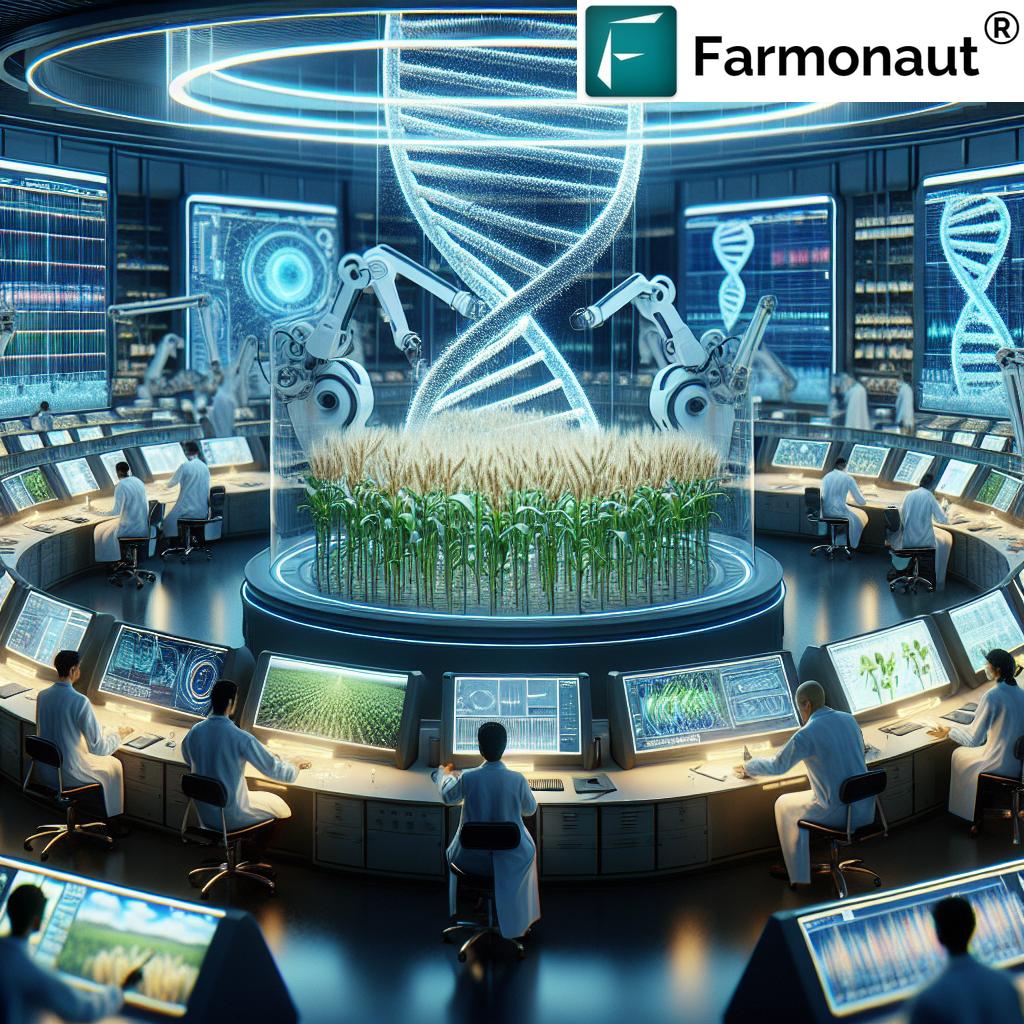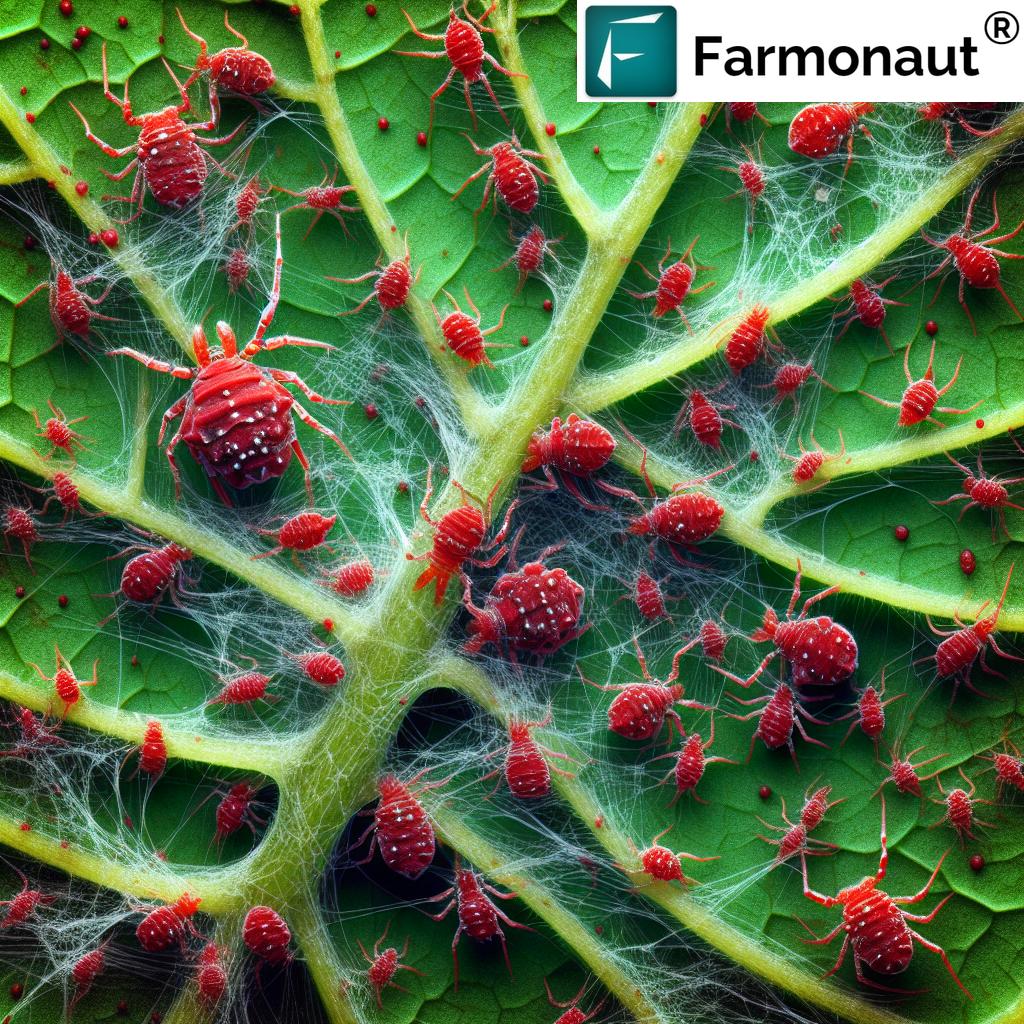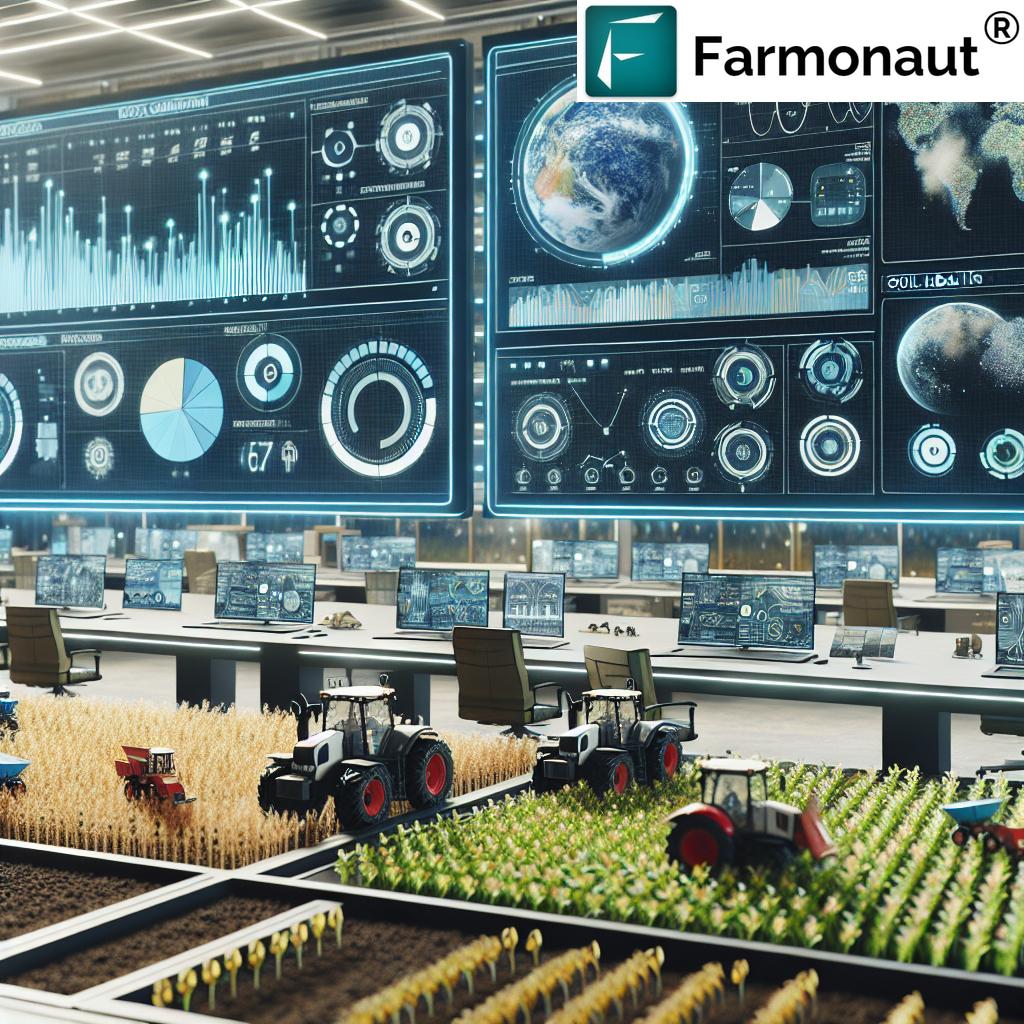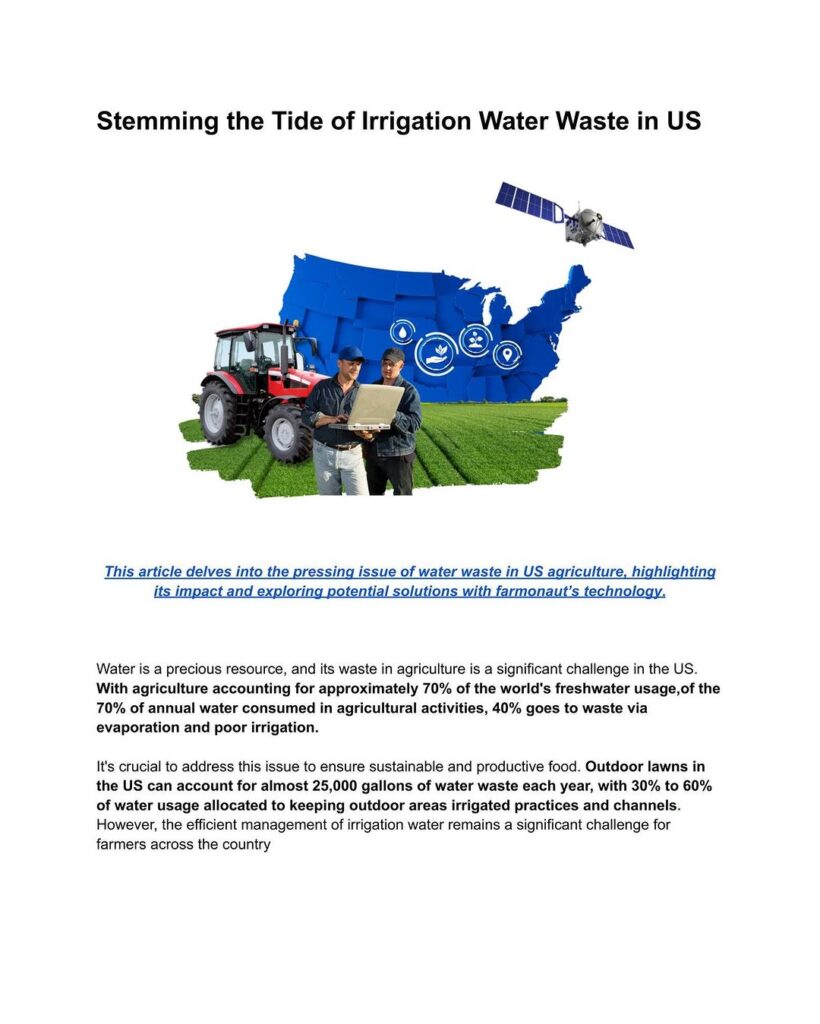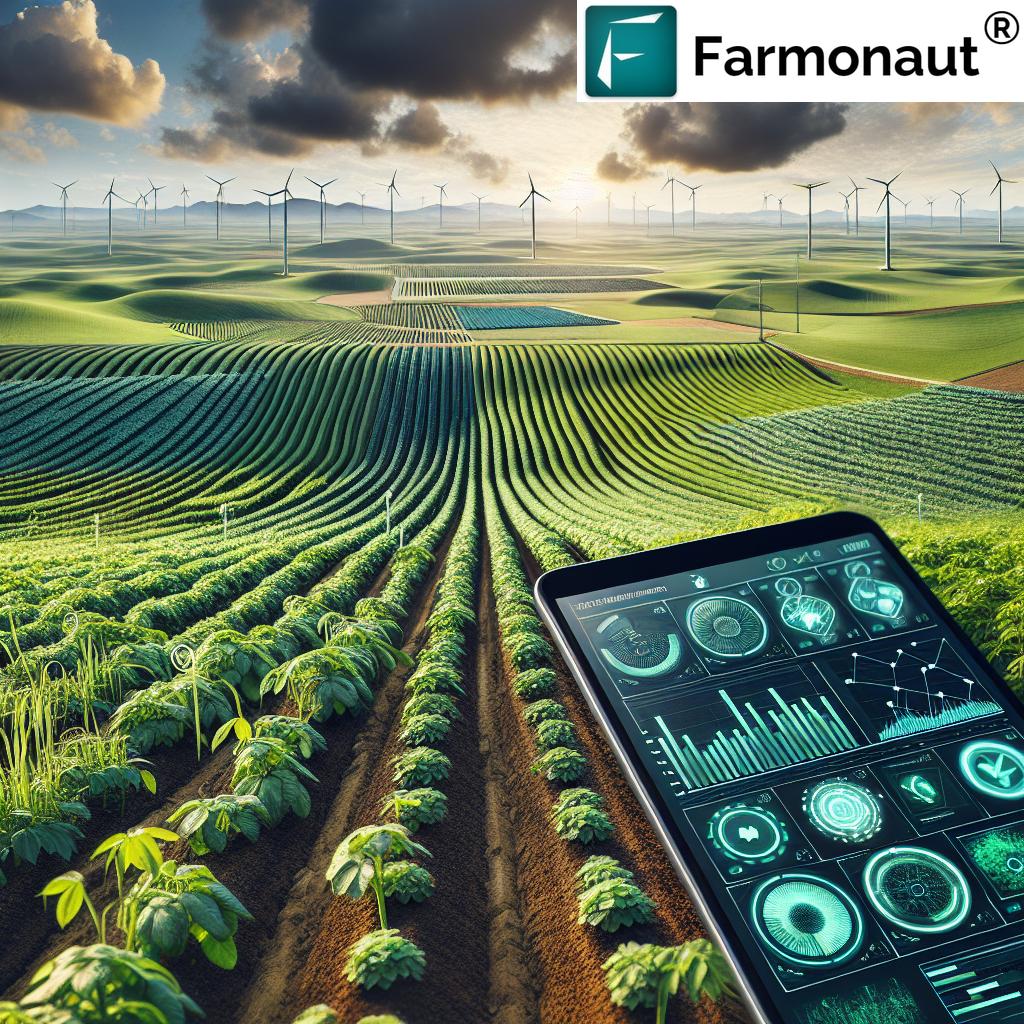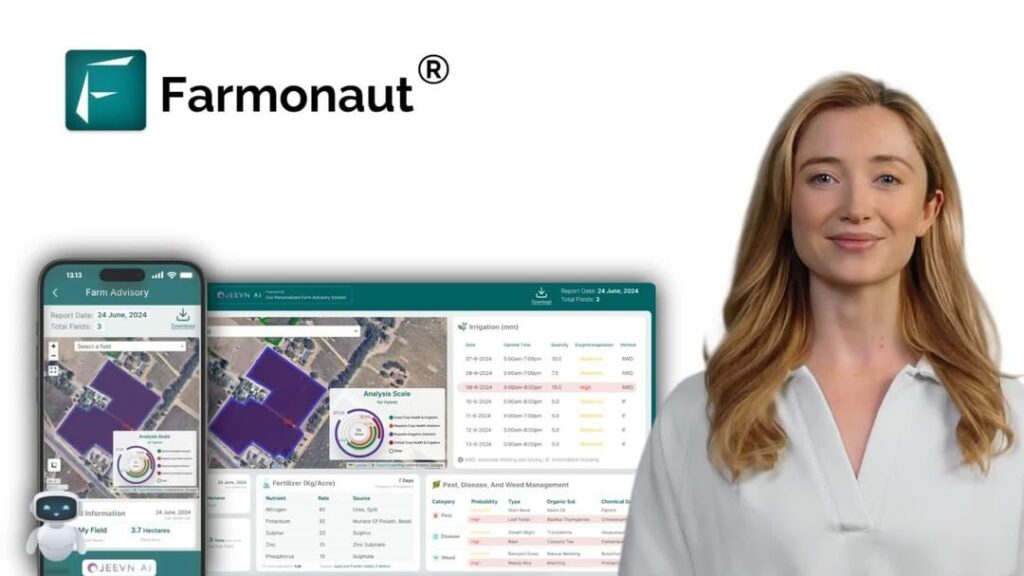7 Revolutionary Agricultural Tools Farmers Swear By
“Over 60% of global farmers adopted precision seeders, doubling planting accuracy since 2010.”
Table of Contents
- Introduction: The Evolution of Modern Agricultural Tools
- Historical Overview – From Sticks to Smart Machines
- Categorizing Agricultural Tools
- 7 Revolutionary Agricultural Tools Farmers Swear By
- Comparative Feature Table of Revolutionary Agricultural Tools
- Modern Innovations: Embracing Precision Farming Technology
- Farmonaut: Powering Precision Agriculture
- Frequently Asked Questions: Agricultural Tools & Technology
- Conclusion: The Future of Agriculture Tools
Introduction: The Evolution of Modern Agricultural Tools
Agricultural progress is the backbone of human civilization. Since early humans first began to cultivate land and gather food, agricultural tools have evolved, enabling us to manage forests, harvest resources, and feed growing populations. As our demands for food and efficiency increased, so did the complexity and impact of the tools and implements we use for farming and forestry.
In this comprehensive guide, we’ll explore the journey of modern agricultural tools—from the earliest hand-held hoe to today’s precision farming technology. We’ll dive into soil preparation techniques, the science behind crop planting and harvesting machines, and highlight seven game-changing instruments that have redefined how farmers meet growing demands for abundant, healthy, and sustainable crops.
You’ll discover how each stage of this evolution of agriculture machinery has fueled better crop yields, reduced labor, and ushered in a new era for both smallholders and large-scale agribusiness.
Our article is for anyone seeking to enhance efficiency, sustainability, and profitability in agriculture—including individual farmers, agribusinesses, and forestry professionals.
Historical Overview – From Sticks to Smart Machines
The story of agricultural tools begins with humankind’s earliest efforts to tame nature for food production. Around the third millennium BC, ancient civilizations such as the Sumerians crafted the first hoe, immortalized in epic literature for its contributions to efficient soil cultivation. This marked a shift from using rudimentary digging sticks and axes for clearing land and gathering food, towards purpose-built instruments that promoted better growth and increased nutrient cycling.
- Hoe: Used to break soil surface, remove weeds, and enable early planting
- Plough: A significant advancement that turned soil, buried weeds, and increased soil nutrients available to new seeds
- Harrows, Cultivators: For secondary tillage, breaking clods, leveling land for efficient sowing
As metallurgy advanced, wooden designs gave way to iron and steel versions, enhancing both durability and efficiency. The evolution from animal-drawn to mechanized machinery fundamentally changed the scale at which humans could manage agriculture and forests.
This era of innovation laid the groundwork for modern devices and systems—proving that agricultural implements aren’t just tools, but a testament to human ingenuity in meeting the world’s growing food demands.
Categorizing Modern Agricultural Tools by Function
Today, agricultural tools are broadly categorized based on their function—each designed to perform essential tasks for crop and land management:
- Tillage Tools: Prepare the soil for planting (see below). Types include ploughs, harrows, cultivators.
- Planting Tools: Sow seeds and transplant seedlings. Includes seed drills, transplanters.
- Harvesting Tools: Gather mature crops. From reapers to combine harvesters.
- Crop Protection Tools: Combat pests, diseases, and weeds (sprayers, weeders).
- Irrigation Tools: Optimize water delivery—from drip irrigation to pivot systems.
- Forestry Tools: Manage forests and harvest timber (chainsaws, axes).
Let’s take an in-depth look at the seven revolutionary tools that have transformed agriculture, incorporating elements of sustainability, precision farming technology, and efficiency.
7 Revolutionary Agricultural Tools Farmers Swear By
“Modern soil preparation tools have reduced manual labor time by nearly 70% compared to traditional methods.”
1. Ploughs – Transforming Soil for Generations
No tool epitomizes the evolution of agriculture like the plough. From the earliest wooden implements to robust iron and steel versions, ploughs are essential for primary tillage: turning over soil, breaking hardpan, burying weeds, and enriching the surface for new crops by bringing nutrients from below.
- Types: Moldboard ploughs—excellent for turning heavy soils; Disc ploughs—best for tough, cloddy conditions; Chisel ploughs—reduce soil compaction while maintaining residue.
- Efficiency: Ploughs have increased work rates and soil health compared to manual digging or hoeing, making them integral to efficient land preparation.
- Modern advancements: Precision-depth ploughing and integration with GPS systems allow accurate and uniform soil conditioning.
This innovation, dating back to ancient Sumeria, remains the first step for millions in soil preparation techniques, and is still among the most commonly used tools in farms worldwide.
2. Harrows – Perfecting the Seedbed for Growth
Once ploughing is complete, harrows step in to create the optimal seedbed by breaking up large soil clods, incorporating crop residue, and leveling the surface. Different types—such as disc harrows, spring-tooth harrows, and chain harrows—are designed for various soil conditions and tillage needs.
- Disc harrows: Exceptional at shattering larger lumps and mixing organic material.
- Spring-tooth harrows: Suited for lighter soils; effective in preparing fields for planting.
- Chain harrows: Best for smoothing out pastures and aerating the topsoil.
Today’s harrows, often mechanized and tractor-mounted, enhance both the efficiency of seed establishment and the uniformity of germination, reducing the risk of blank patches and weed outbreaks.
3. Seed Drills – Precision Planting for Consistent Yield
Accurate seed placement is crucial for uniform crop growth and resource utilization–a feat achieved by the introduction of the seed drill during the Agricultural Revolution. Unlike traditional broadcasting by hand, which results in uneven stands and competition among seeds, seed drills plant at precise depths and intervals.
- Manual and mechanized seed drills: Suited for different farm sizes, ranging from hand-pushed devices to fully automated planters.
- Technology: Modern precision seeders use GPS and seed metering to maximize planting efficiency and minimize wastage.
- Impact: Studies show a doubling of planting accuracy and significant improvements in crop emergence and yield.
The emergence of precision farming technology in seed drills has reduced labor, saved seeds, and revolutionized crop establishment across nearly every major crop worldwide.
4. Transplanters – Uniform Seedling Establishment
For crops like rice, vegetables, and tobacco, successful plantation often requires transplanting young seedlings instead of direct seeding. Transplanters facilitate this process, ensuring each plant is spaced optimally and placed at a suitable depth for rapid rooting and nutrient uptake.
- Types: From manual hand tools to sophisticated, tractor-mounted transplanters capable of handling thousands of plants per hour.
- Impact: Promotes better establishment, reducing transplant shock and lowering disease risk.
The shift toward mechanized transplanters has not only cut labor cost but also enabled more predictable, uniform, and scalable agriculture—an answer to the demands of large-scale food systems.
5. Combine Harvesters – All-in-One Harvesting Efficiency
Among the greatest advancements in crop harvesting machines, the combine harvester combines the essential processes of reaping, threshing, and cleaning grains such as wheat, rice, and corn—all in a single pass.
- Efficiency: Reduces harvest time from weeks or months to hours, slashing the need for manual labor.
- Technology: Modern combines include yield monitoring, GPS-guided steering, and data capture for precision farming technology.
- Impact: Enables timely harvest, preserves grain quality, and increases profits by reducing field losses.
The spread of combines has drastically improved the productivity and reliability of entire food systems—especially in wheat and rice belts globally.
6. Sprayers and Weeders – Protecting and Nurturing Crops
Modern agriculture must fight constant threats from pests, diseases, and weeds. Sprayers distribute pesticides, herbicides, fertilizers, and micronutrients accurately, ensuring healthy crops while minimizing chemical usage. Weeders, both manual and mechanical, remove competitive weeds—essential weed control tools for sustainable yield.
- Sprayers: Range from handheld to self-propelled models, often integrated with GPS or variable-rate application for efficient coverage.
- Weeders: Include rotary weeders, manual hoes, and sophisticated mechanical implements that uproot weeds without harming desired crops.
- Benefit: Precision devices maximize efficacy, minimize input costs, and reduce environmental impact.
Efficient crop protection supports not only immediate pest control but also long-term soil health and sustainable farm systems.
7. Advanced Irrigation Systems – Maximizing Water, Minimizing Waste
Water scarcity is a major challenge in global agriculture. Irrigation systems for agriculture have advanced from flood irrigation to drip and sprinkler technologies—delivering water exactly where it’s needed, when it’s needed.
- Drip irrigation: Delivers water directly to root zones, reducing evaporation losses and promoting better growth.
- Sprinkler and pivot irrigation: Mimic rainfall or cover vast fields, optimizing water distribution in diverse environments.
- Precision: Automated scheduling, soil moisture sensors, and data integration with weather forecasts now push these systems into the high-tech era.
These irrigation solutions boost farm efficiency, ensure reliable yields, and are indispensable for both small and large-scale farm management.
Comparative Feature Table of Revolutionary Agricultural Tools
| Tool Name | Introduction Era | Main Function | Estimated Efficiency Boost (%) | Technology Type | Current Adoption Rate (%) |
|---|---|---|---|---|---|
| Ploughs | ~3000 BC | Primary soil tillage; turns, buries weeds, aerates soil | 60-75% | Manual, Mechanized | 85% |
| Harrows | 2000 BC | Break soil clods, level land, seedbed preparation | 55-70% | Manual, Mechanized | 75% |
| Seed Drills | 18th Century AD | Precision seed planting at controlled depth/intervals | 80-100% | Mechanized, Digital | 60% |
| Transplanters | 19th Century AD | Plant seedlings with uniform spacing and depth | 60-90% | Manual, Mechanized | 55% |
| Combine Harvesters | Mid-19th Century AD | Simultaneous reaping, threshing, cleaning | 85-95% | Mechanized, Digital | 50% |
| Sprayers & Weeders | 20th Century AD | Crop protection, weed/pest control | 70-90% | Manual, Mechanized, Digital | 65% |
| Advanced Irrigation Systems | Mid-20th Century AD | Efficient water delivery (drip, sprinkler, pivot) | 80-95% | Mechanized, Digital, Precision | 40% |
Modern Innovations: Embracing Precision Farming Technology
The 21st century is witnessing an agricultural revolution centered around precision farming technology. These digital tools use satellite data, sensors, and artificial intelligence to deliver site-specific crop management.
- GPS-guided machinery: Allows tractoring, seeding, and fertilizing with sub-inch accuracy—reducing overlap, saving resources, and improving soil health.
- Drones and satellite imagery: Provide real-time crop, soil, and resource monitoring. Farmonaut’s platform stands out here, enabling farmers to track crop stress, soil moisture, and vegetation health directly from their smartphones or browser, at affordable rates.
- AI-based systems: Deliver tailored crop advisories and automate field operations, moving traditional farming toward smart, data-driven agriculture.
- Blockchain traceability: Increases transparency from farm to market—check out Farmonaut Traceability Solutions to see how blockchain is enhancing food systems’ credibility.
These advancements not only increase yields and minimize waste but also contribute to sustainability by precisely targeting inputs and optimizing operations for environmental stewardship.
Farmonaut: Powering Precision and Productivity in Agriculture
As we transition from evolution of agricultural implements to truly data-driven farming, agile companies like Farmonaut are at the forefront of delivering innovation straight into farmers’ hands—without costly sensors or hardware. Farmonaut democratizes precision farming by using satellite-based monitoring, advanced AI analytics, and a highly accessible app ecosystem.
Key Farmonaut Technologies That Elevate Modern Agriculture
- Satellite-Based Crop Health Monitoring:
Detect crop stress, pest/disease outbreaks, soil moisture shortages, and more with high-resolution, multi-spectral satellite imagery. This allows early intervention, saves resources, and maximizes yields—from your phone or computer. - AI Advisory System (Jeevn AI):
Input data from satellites, weather radar, and expert models into Jeevn AI to get actionable, real-time advisories for everything from irrigation to pest management. - Blockchain Traceability:
Log and authenticate every stage of your crop’s journey. Farmonaut’s Product Traceability solutions bring transparency from farm to fork—ideal for food brands, textile producers, and anyone who values credibility. - Fleet and Resource Management:
Monitor, optimize and manage all agricultural vehicles and machinery to reduce costs and downtime. Fleet managers and large agribusinesses streamline all operations while increasing safety and productivity. Learn more at Fleet Management Solutions. - Carbon Footprinting:
Farmonaut offers real-time monitoring of a farm’s or agribusiness’s carbon emissions, supporting eco-certification and sustainability reporting. Take a closer look at Farmonaut Carbon Footprinting for your organization. - Verified Crop Loan & Insurance:
Lenders and insurance providers rely on independently-verified satellite proof for acreage and losses, reducing fraudulent claims. Improved financial access for farmers is achieved through Farmonaut Crop Loan & Insurance Services.
This constellation of data-driven, scalable, and mobile-centric tools is reimagining how modern agricultural tools can be deployed to benefit farms of every size, from a single acre to tens of thousands of hectares.
Explore Farmonaut’s app: Access the Farmonaut Web, Android, or iOS apps now and unlock affordable, cutting-edge decision-making for your land.
Need seamless integration?
Check out Farmonaut’s API (developer docs) for satellite and weather data services—empower your app, research project, or business platform with trusted, up-to-date farm insights.
Mobile-Optimized Precision for Every Farmer
Farmonaut’s advantage lies in its easy-to-use, intuitive interfaces, scale-agnostic architecture, and affordable subscription model. Whether you manage a small field or oversee large-scale plantation, Farmonaut’s Large Scale Farm Management platform adjusts to your needs and scales with your ambitions.
Farmonaut Subscription Plans
Choose from flexible, affordable plans to monitor your fields and forests, measure carbon, trace products, or manage your agricultural fleet—all from a unified interface.
Frequently Asked Questions: Agricultural Tools & Technology
What are the essential modern agricultural tools?
The most essential modern agriculture tools include ploughs for tillage, harrows for leveling, seed drills and transplanters for planting, combine harvesters for efficient harvest, sprayers and weeders for crop protection, and advanced irrigation systems such as drip and sprinkler setups.
How have soil preparation techniques evolved?
Soil preparation techniques have advanced from manual digging with sticks and hoes to mechanized ploughs and harrows, and now to precision tillage tools guided by sensors and GPS, reducing labor by over 70% and maximizing nutrient availability for crops.
Why is precision farming technology important?
Precision farming technology ensures optimal use of resources such as water, fertilizers, and seeds. It improves farm profitability, reduces waste, and supports sustainable environmental management by targeting interventions where and when they’re needed.
How do irrigation systems for agriculture increase efficiency?
Drip, sprinkler, and pivot irrigation systems deliver water directly to plant roots, minimizing evaporation losses and ensuring even distribution. Automation and connectivity further boost water efficiency and reduce input costs.
What is the role of forestry tools and equipment in modern agriculture?
Tools such as chainsaws, axes, and mechanized harvesters enable efficient resource gathering and forest management, supporting both commercial timber harvest and sustainable ecosystem practices.
How do Farmonaut’s solutions help different user segments?
Farmonaut supports individual smallholders, large-scale agribusinesses, NGOs, governments, corporates, and financial institutions with customizable, cost-effective, and scalable platforms for modern agricultural monitoring and management.
How can I access and integrate Farmonaut’s technology?
You can download the Android or iOS app, use the web/browser platform, or integrate data into your digital products via Farmonaut API.
Conclusion: The Future of Modern Agricultural Tools
The journey from sticks to AI-enabled farm management tools underscores agriculture’s relentless pursuit of efficiency, sustainability, and food security. The 7 revolutionary agricultural tools we highlighted are more than implements; they are cornerstones for future-focused farming that balances the needs of today’s populations with responsible stewardship of resources and the environment.
With the rapid pace of technology—from smart tractor systems to satellite-driven advisory apps like Farmonaut—tools will continue to evolve and empower us to deliver food, manage forests, and nurture land more intelligently and sustainably than ever before.
Keep innovating, keep growing, and keep harnessing the power of modern agricultural tools—the foundation of a flourishing agricultural future.
References:
en.wikipedia.org – Hoe (tool),
fmworldagri.com – Types of farm equipment,
en.wikipedia.org – Harrow,
en.wikipedia.org – Cultivator,
en.wikipedia.org – Seed drill,
evolutionoftheprogress.com – History of Farming Equipment,
garudimplements.com – Implements Types & Uses.









